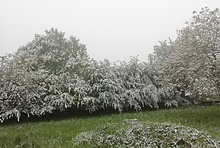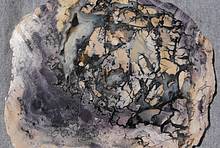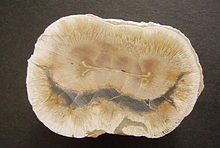Home PageAbout MindatThe Mindat ManualHistory of MindatCopyright StatusWho We AreContact UsAdvertise on Mindat
Donate to MindatCorporate SponsorshipSponsor a PageSponsored PagesMindat AdvertisersAdvertise on Mindat
Learning CenterWhat is a mineral?The most common minerals on earthInformation for EducatorsMindat ArticlesThe ElementsThe Rock H. Currier Digital LibraryGeologic Time
Minerals by PropertiesMinerals by ChemistryAdvanced Locality SearchRandom MineralRandom LocalitySearch by minIDLocalities Near MeSearch ArticlesSearch GlossaryMore Search Options
The Mindat ManualAdd a New PhotoRate PhotosLocality Edit ReportCoordinate Completion ReportAdd Glossary Item
Mining CompaniesStatisticsUsersMineral MuseumsClubs & OrganizationsMineral Shows & EventsThe Mindat DirectoryDevice SettingsThe Mineral Quiz
Photo SearchPhoto GalleriesSearch by ColorNew Photos TodayNew Photos YesterdayMembers' Photo GalleriesPast Photo of the Day GalleryPhotography
╳Discussions
💬 Home🔎 Search📅 LatestGroups
EducationOpen discussion area.Fakes & FraudsOpen discussion area.Field CollectingOpen discussion area.FossilsOpen discussion area.Gems and GemologyOpen discussion area.GeneralOpen discussion area.How to ContributeOpen discussion area.Identity HelpOpen discussion area.Improving Mindat.orgOpen discussion area.LocalitiesOpen discussion area.Lost and Stolen SpecimensOpen discussion area.MarketplaceOpen discussion area.MeteoritesOpen discussion area.Mindat ProductsOpen discussion area.Mineral ExchangesOpen discussion area.Mineral PhotographyOpen discussion area.Mineral ShowsOpen discussion area.Mineralogical ClassificationOpen discussion area.Mineralogy CourseOpen discussion area.MineralsOpen discussion area.Minerals and MuseumsOpen discussion area.PhotosOpen discussion area.Techniques for CollectorsOpen discussion area.The Rock H. Currier Digital LibraryOpen discussion area.UV MineralsOpen discussion area.Recent Images in Discussions
Techniques for CollectorsRE: Permanently labelling specimens
20th Jul 2015 01:02 UTCKyle Beucke 🌟
What are some popular ways to permanently (water and alcohol resistence is a must) label rock and mineral specimens? Most of my material is matrix-rich, and I want to associate certain data (mainly collecting site and chemical analysis data) with particular specimens, permanently. A lot of my material, at the present, is marked up with sharpies and in ziploc bags with paper labels, but this is risky. Is some kind of enamel paint and ink used? Or a transparent laquer of some kind painted over a small paper label, over the rock?
Thanks for the input,
Kyle
20th Jul 2015 01:22 UTCReiner Mielke Expert
21st Jul 2015 21:02 UTCKyle Beucke 🌟
Kyle

21st Jul 2015 21:17 UTCHolger Hartmaier 🌟
Thanks,
Holger
22nd Jul 2015 01:58 UTCReiner Mielke Expert

22nd Jul 2015 02:29 UTCHolger Hartmaier 🌟
22nd Jul 2015 15:40 UTCMark Heintzelman 🌟 Expert
I have a few decent albeit basic reference specimens with original labels in my own collection that are now approaching their second century, something we should all probably consider as a possibility. ;)
MRH
8th Sep 2015 21:18 UTCPaul Stephen Cyr

8th Sep 2015 21:36 UTCAlfredo Petrov Manager

12th Apr 2016 14:06 UTCNicholas Schaffer
When you say 'white out', do you mean standard correction fluid?
Does anyone else use any other type of fluid such as enamel paint?
Thanks,
NS
12th Apr 2016 15:51 UTCMark Heintzelman 🌟 Expert
I still feel properly sealed fibrous paper would give the longest lifespan. In mine, I use an acid free clay-coat stock. Clay-coat is very stable and gives a nice smooth surface perfect for writing with a micro-fine india ink marker (pigment not dye), and the lacquer coat further helps bind the clay/fibers together. Like Alfredo, I still write mine by hand . . . for now. I actually do them very small, under a stereoscope, but as these hands get older and older and eventually too unsteady, I may have to go the way of the laser-printer (still a perfectly good option, a pigment not a dye).
MRH

12th Apr 2016 16:35 UTCSusan Robinson
One thing that may help is to keep sulfide specimens dry and away from humid conditions. A small, white area can first be painted on the mineral specimen (prior to paying on a label), with gesso, which contains calcium carbonate, and will help to neutralize any acid that may form by oxidation of the pyrite. The catalog number can either be written on the gesso surface with India ink or affixed on a small piece of acid-free paper with Elmer's glue. After the India ink or Elmer's glue has dried, coat the number with a thin layer of nail polish (collodion), which will water-proof the number, should you want to wash the mineral specimen sometime later. These are standard museum practices, but the only way to completely avoid this problem with sulfides is to isolate those minerals from oxygen, which is needed for the oxidation process to occur. Oxidation of marcasite is one prime example of what happens to a sulfide over time, if not properly cared for.
For those interested in this problem, go to the internet and google: "pyrite disease".

12th Apr 2016 19:13 UTCKelly Nash 🌟 Expert

13th Apr 2016 01:11 UTCDana Morong
13th Apr 2016 08:58 UTCMark Heintzelman 🌟 Expert
Gesso, if you choose to go that route, can employ many different binders and the best archival ones are the ones you mix yourself, Rabbit skin glue which is the strongest, and fish glue which is the most flexible, but both of these are hydroscopic as well. Only acrylic binder, the gesso you find "ready mixed" in art stores, dries to a non-absorbent state which would be more applicable for use on sulfides if humidity were a concern, but it's also the weakest binder and as a plastic, of the least archival quality, not to mention more prone to delamination over time than the other binders, especially on hydroscopic and non-porous surfaces.
Tyvek is amazing stuff! I remember being impressed with the strength of the first document envelope I ever encountered that made of the material, but it is polyethylene, also a plastic which has limited archival quality compared to natural material/fibers. Now deep into the "age of plastic", issues over plastics natural inclination to degrade over time has become a serious concern for archivists. Studies of accelerated aging in Weathering Tester (QUV) and weatherometer (WOM) chambers, polyethylene exhibited notable modifications in nanomechanical properties correlated with the corresponding chemical processes due to aging, as measured through the carbonyl index profile obtained from ATR–FTIR. In the aging process, polar groups in the polyethylene are generated, as well as chain scission and cross-linking. As net effects of these processes respective increases in crystallinity, density and hardness and surface cracking results. ("The effect of accelerated aging on the surface mechanical properties of polyethylene": Departamento de Quı́mica, Universidade Federal do Paraná UFPR, Brazil, October 2002).
This may all seem a bit "over the top" admittedly, but I have a fine arts degree, an understandable interest archival quality materials, and a penchant for historic mineral specimens as well. It is sad to see what time has done to some of these venerable old tags and labels, so I take that into account and try to be better informed and to use the best reasonable options available to avoid the same.
13th Apr 2016 11:25 UTCKeith Compton 🌟 Manager
There is no singular correct method of cataloguing or labelling but to see what is available you only need to use Google to search for something like "museum geological cataloguing methods".
You will then find innumerable different methods, many outline the benefits (pros and cons) of particular methods.
There are also several previous messages in Mindat on labelling techniques.
Cheers
Keith

18th Apr 2016 16:14 UTCBochao Liu




Mindat.org is an outreach project of the Hudson Institute of Mineralogy, a 501(c)(3) not-for-profit organization.
Copyright © mindat.org and the Hudson Institute of Mineralogy 1993-2024, except where stated. Most political location boundaries are © OpenStreetMap contributors. Mindat.org relies on the contributions of thousands of members and supporters. Founded in 2000 by Jolyon Ralph.
Privacy Policy - Terms & Conditions - Contact Us / DMCA issues - Report a bug/vulnerability Current server date and time: April 23, 2024 21:29:20
Copyright © mindat.org and the Hudson Institute of Mineralogy 1993-2024, except where stated. Most political location boundaries are © OpenStreetMap contributors. Mindat.org relies on the contributions of thousands of members and supporters. Founded in 2000 by Jolyon Ralph.
Privacy Policy - Terms & Conditions - Contact Us / DMCA issues - Report a bug/vulnerability Current server date and time: April 23, 2024 21:29:20












